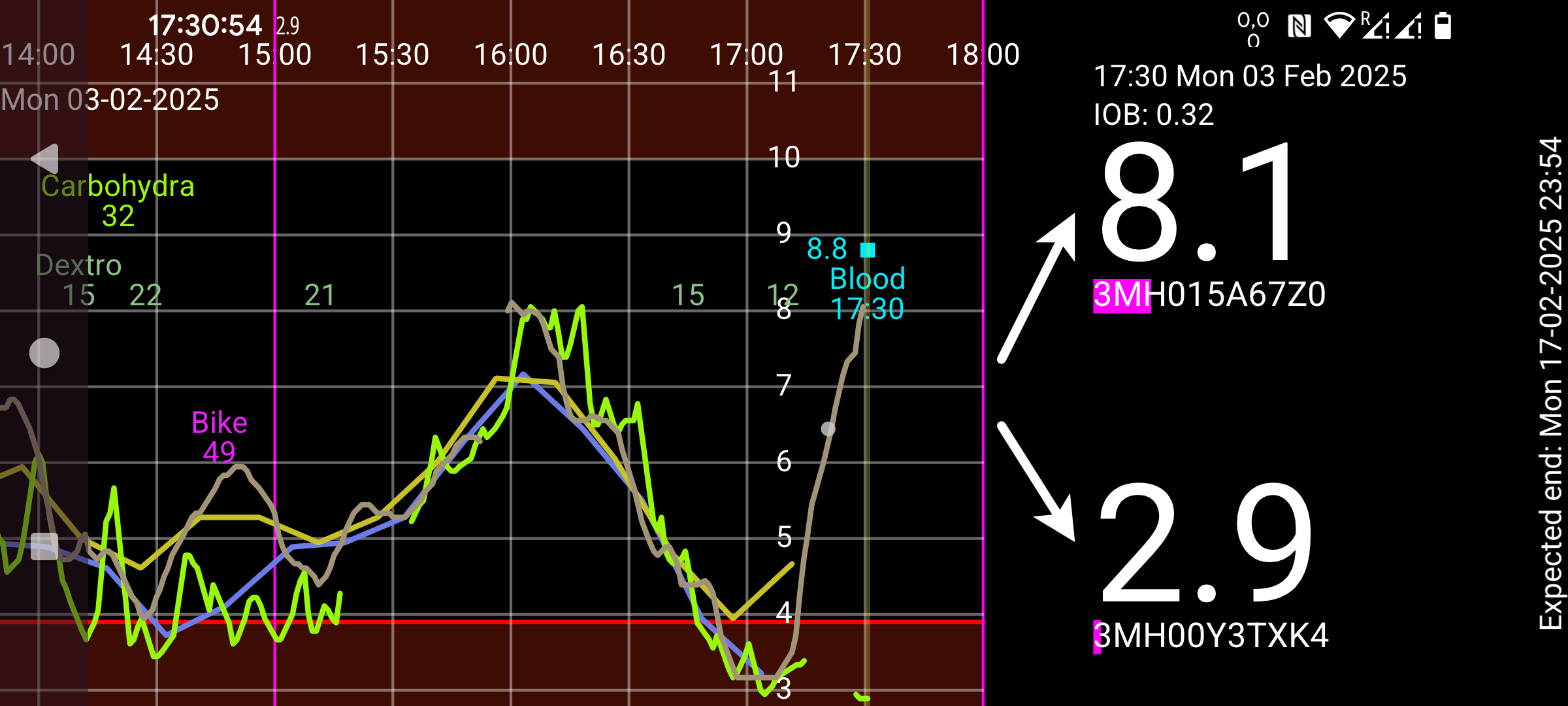
Freestyle Libre 1 and 2 sensors as used by Abbott Librelink app are not manually calibrated; Finger prick glucose measurements are not used to adjust the sensor readouts.
Some people demand that Juggluco should add manual calibration. I don't know the exact reason why. Some may not known that Freestyle Libre sensors are factory calibrated. But I think that the reason is that they see a discrepancy between the sensor readout and the finger prick glucose value and hope by adjusting the sensor readout it will better approach the finger prick.
In Juggluco you can't manually calibrate, because I am afraid it will make it worse. When I look at my own glucose measurements, they don't diverge always in the same direction. The direction will also depend on what moments you do your finger pricks. If you check always a low sensor readout, you will find that the sensor readings are too low. If you do a finger prick when you sense a hypo, but the sensor doesn't show one, you will find that the sensor gives too high values.
For some time I have sent the sensor glucose values from Juggluco to xDrip and have entered all my finger pricks as calibration data in xDrip. As a results the readings of xDrip were much worse than the not manually calibrated values of Juggluco.
Why should other users do better?
There is also the difficulty of sensor range. The sensor doesn't give values lower than 2.2 mmol/L. If the sensor values are more than 1.7 mmol/L lower than blood glucose, it can't detect hypoglycemia anymore. If the sensor gives LO (lower than 2.2 mmol/L), it means in reality lower than 4.2 mmol/L when it's readings are 2 mmol/L too low. So it can be 4.2 mmol/L (nothing to worry about) are 1.4 mmol/L (at the border of getting unconscious.) If a sensor readings consistently diverges so much from the blood glucose, you shouldn't use the sensor anymore.
Getting a replacement from Abbott can give difficulties. Although they easily replace sensors that fall off, they can be very difficult when you want a replacement because of poor readings. Probably they think that the sensors are always so bad, so that replacement doesn't make a difference.
Here is a list of restrictions, based on a dutch e-mail I received from Abbott:
You shouldn't use the readings of a sensor for the first 24 hours of placement;
Only trust the sensor when the glucose level is stable (bij voorkeur nadat je de sensor 24 uur hebt gedragen en/ of er sprake is van een stabiele situatie ten aanzien van de glucosewaarden (de trendpijl op de reader en/ of FreeStyle LibreLink app horizontaal));
You should not compare them with blood at the moment of scanning, but blood 5 to 10 minutes before, because the sensors are so much behind compared to blood glucose (Wacht na de vingerprik 5-10 minuten en scan dan de FreeStyle Libre sensor. );
You should measure the blood three times at different moment of the same day (Indien je de meting uit het ISV wilt vergelijken met jouw bloedglucose dan vragen wij je minimaal een drietal metingen op verschillende tijdstippen gedurende dezelfde dag te nemen. );
You should do another measurement together with the Abbott customer service (Hou indien mogelijk de sensor op de arm. Wij kunnen dan samen nog een test uitvoeren. )
From the telephone conversation with Abbott customer service I understood that they consider less than 30% off as acceptable. This seemed to be calculated as the absolute difference divided by the sensor value. Sensor measurement 2.4 mmol/L and a blood glucose measurement of 4.9 mmol/L was interpreted as more than 100% difference.
How the different measurements are integrated I don't know, but it sounds like they only accept that the sensor is wrong if it diverges at all occasions.
I had a sensor that was off 4 mmol/L (72 mg/dL) (the different between the sensor and blood glucose measurement was 4 mmol/L (72 mg/dL)) and the customer service didn't accept that as a fault of the sensor, because I had only scanned at the moment of the blood glucose measurement.
